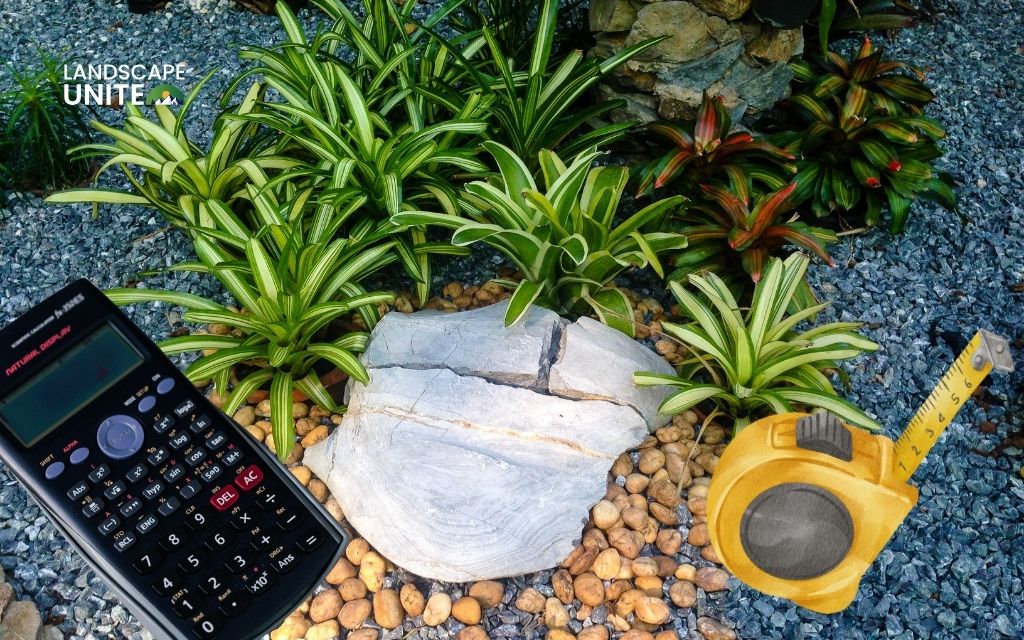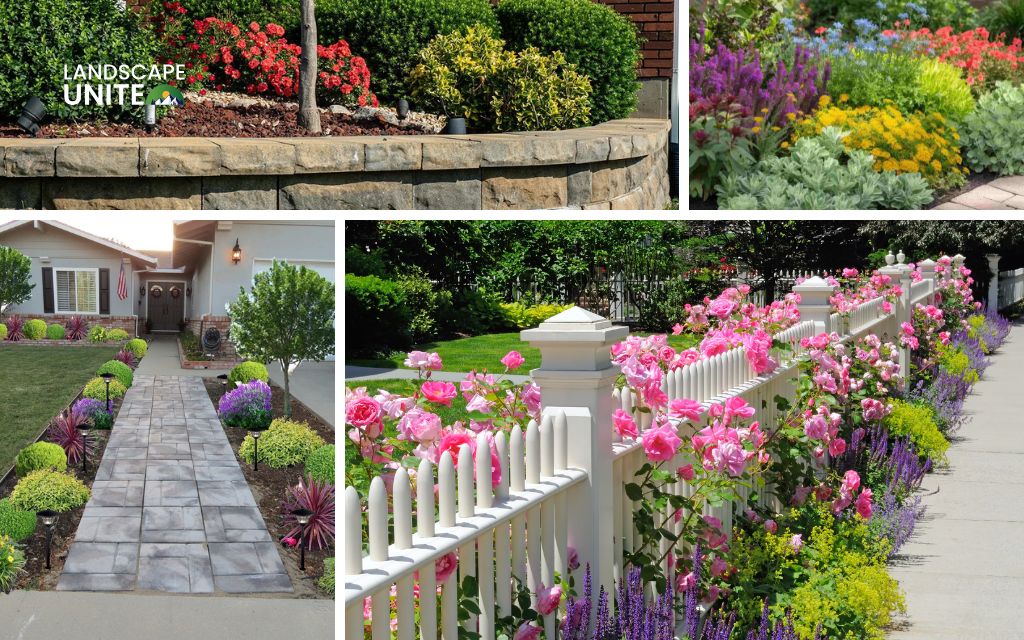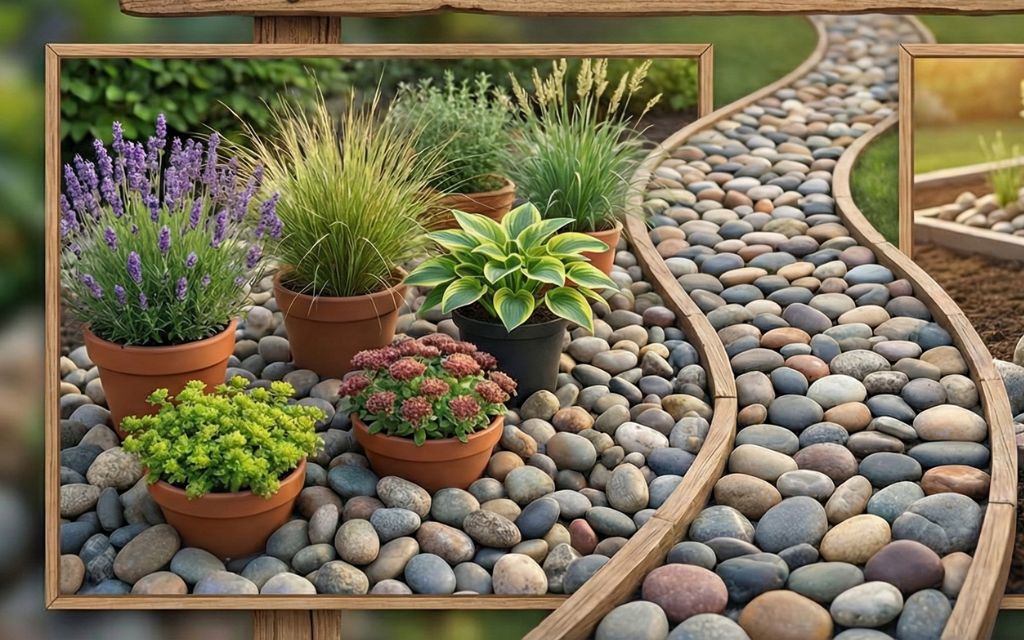Sudden winter freezes can cause costly damage to sprinkler systems if not properly prepared. The expansion force of freezing water is powerful enough to split metal pipes and destroy valve components, making winterizing your sprinkler system one of the most critical seasonal maintenance tasks for homeowners in freeze-prone regions.
This comprehensive guide for how to winterize sprinkler system will walk you through step-by-step methods, including manual, automatic, and blowout techniques. Whether you have a simple gravity-drain system or a complex irrigation setup with backflow preventers, we’ll cover the specific approaches based on your system type and regional climate requirements.
By following these proven winterization methods, you’ll protect your lawn care investment and ensure your irrigation system is ready to function perfectly when spring arrives.
Tools and supplies you’ll need
Before beginning the winterization process, gather these essential tools and supplies to ensure a thorough and safe job:
Essential equipment:
- Air compressor with at least 5 – 6 CFM capacity (for blowout method)
- Quick-connect fitting or adapter compatible with your system
- Hose bib or valve wrench for manual valve operations
- Safety goggles and work gloves for protection
- Adjustable wrench set for various fittings
Optional:
- Rain/freeze shut-off sensor for automatic winter protection
- Pipe thread sealant tape for any connections
- Flashlight or headlamp for working in low-light conditions
- Notebook to document zone locations and specific requirements
Having the right tools on hand will make the winterization process smoother and help prevent damage to your system components during the procedure.
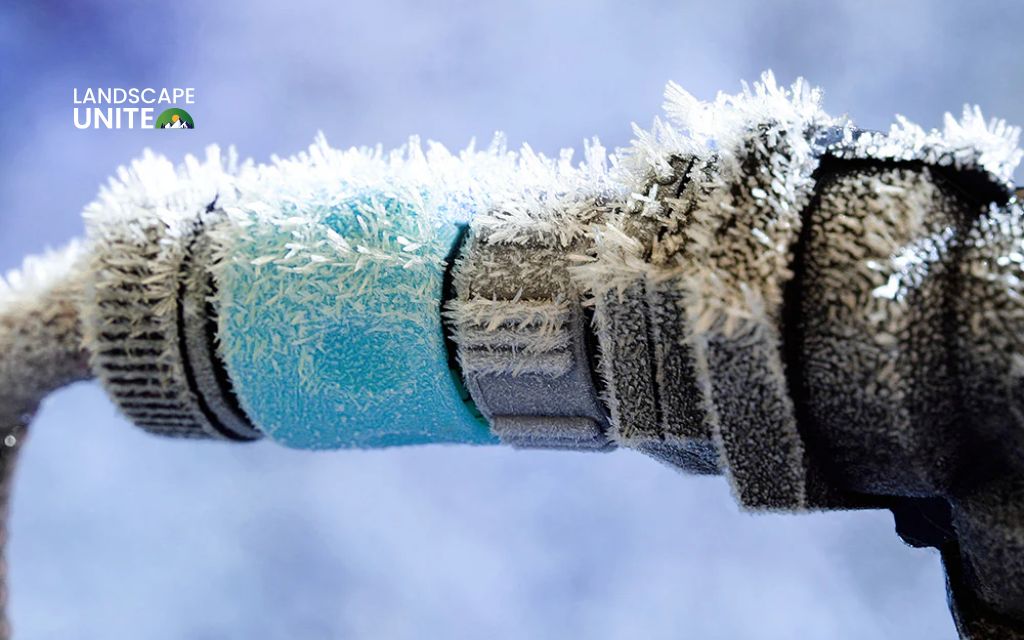
How to winterize sprinkler system: 3 proven methods
Manual drain method
The manual drain method is the simplest approach and works best for systems designed with gravity drainage capabilities. This method relies on strategically placed drain valves and low-point drains to remove water from the system.
Step-by-step process:
- Shut off the water supply to the sprinkler system at the main shutoff valve, typically located near your water meter or where the irrigation line branches from your main water supply
- Open all drain valves and low-point drains throughout the system – these are usually located at the lowest points of each zone and main supply lines
- Raise sprinkler heads manually by lifting the internal mechanisms to allow trapped water to escape from the heads and connecting pipes
- Keep all drain valves open throughout the winter months to prevent any residual water from accumulating and freezing
Automatic drain method
Modern sprinkler systems often include automatic drain valves that activate when system pressure drops below a certain threshold. This method combines convenience with effective water removal for compatible systems.
Process for automatic systems:
- Turn off the water supply and irrigation timer/controller to stop all system operations
- Allow the system to automatically release pressure and drain when the water supply is shut off – automatic drain valves will open when pressure drops
- Check for remaining water in backflow preventers, valve boxes, and other components that may not drain automatically
- Open any manual valves for extra drainage assurance, particularly at high points where air pockets might trap water
Even with automatic drain capabilities, it’s essential to verify complete drainage and manually assist areas that may retain water, especially in backflow prevention devices and valve assemblies.
Blowout method (with air compressor)
The blowout method using compressed air is the most reliable winterization technique for cold climates and provides the most thorough water removal from all system components.
Preparation steps:
- Turn off the main water supply to the irrigation system completely
- Open all manual drain valves to begin initial water drainage
- Connect your air compressor to the system using a quick-connect fitting, typically installed at the main line or through a hose bib connection
Air pressure specifications:
- 50 PSI maximum for PVC pipe systems to prevent cracking
- 80 PSI maximum for polyethylene (poly) pipe systems
- Always use a pressure regulator to maintain consistent, safe pressure levels
Zone-by-zone blowout process:
- Activate one zone at a time through your irrigation controller
- Apply compressed air for 1 – 2 minutes per zone while sprinkler heads are running
- Watch for clear air discharge from all sprinkler heads before moving to the next zone
- Shut off air pressure before disconnecting the compressor to prevent backflow
Safety Warning: Always wear safety goggles and protective equipment. Never exceed recommended PSI levels, as excessive pressure can damage pipes, fittings, and sprinkler heads. The force of compressed air can cause serious injury if safety precautions are ignored.
How to winterize a sprinkler system with backflow preventer
Backflow preventers require special attention during winterization because they contain multiple chambers and valves that can trap water and freeze, causing expensive damage to these critical safety devices.
Backflow preventer winterization steps:
- Turn off water at the main shutoff valve located before the backflow preventer
- Open both test cocks (small valves on the backflow preventer) to allow water drainage
- Open the main drain valve if your backflow preventer is equipped with one
- Use gentle compressed air if necessary, but be extremely cautious as backflow preventers contain delicate internal components
- Leave test cock valves at a 45-degree angle throughout winter to prevent water from becoming trapped in the chambers
Some backflow preventers require professional winterization due to their complex internal mechanisms. If you’re unsure about the proper procedure for your specific model, consult with a certified irrigation professional to avoid costly damage.

How long does it take to winterize a sprinkler system?
The time required for sprinkler system winterization varies based on the method chosen and system complexity:
- Manual or automatic drain method: 30 – 45 minutes for most residential systems. This includes time to locate and operate all drain valves, check for complete drainage, and verify that backflow preventers are properly drained.
- Blowout method: 45 – 90 minutes depending on the number of zones in your system. Systems with 6 – 8 zones typically take about an hour, while larger systems with 10+ zones may require up to 90 minutes for thorough air blowout of each zone.
- Professional service: Usually completed in under 1 hour with commercial-grade equipment and experienced technicians who can efficiently move through the process.
When should you winterize a sprinkler system?
Timing is crucial for effective sprinkler system winterization. The goal is to complete the process before your first hard freeze occurs in your area.
- Right timing ranges from mid-October through early November, depending on your geographic location and local climate patterns
- Complete winterization before temperatures reach 32°F or lower for extended periods
- Consult your local USDA hardiness zone and average frost date information for more precise timing in your area
Monitoring local weather forecasts and being prepared to winterize quickly when unexpected early freezes are predicted can save your system from damage.
Common mistakes to avoid
Avoiding these frequent winterization errors will help ensure complete protection of your irrigation system:
- Forgetting to shut off the main water valve: This is the most critical step and must be completed first to prevent water from refilling the system during winterization.
- Using excessive PSI with the air compressor: Too much pressure can crack pipes, damage fittings, and destroy sprinkler head mechanisms. Always follow manufacturer pressure recommendations.
- Skipping backflow preventer drainage: These devices are expensive to replace and particularly vulnerable to freeze damage due to their complex internal structure.
- Not opening all manual drain valves: Leaving any drain valves closed can trap water in system sections, leading to freeze damage in those areas.
- Winterizing too late after a freeze event: Once water has frozen in your system, damage may already be done. Prevention is always better than attempting repairs after freeze damage occurs.
- Incomplete zone coverage during blowout: Skipping zones or not running each zone long enough can leave water trapped in those sections.
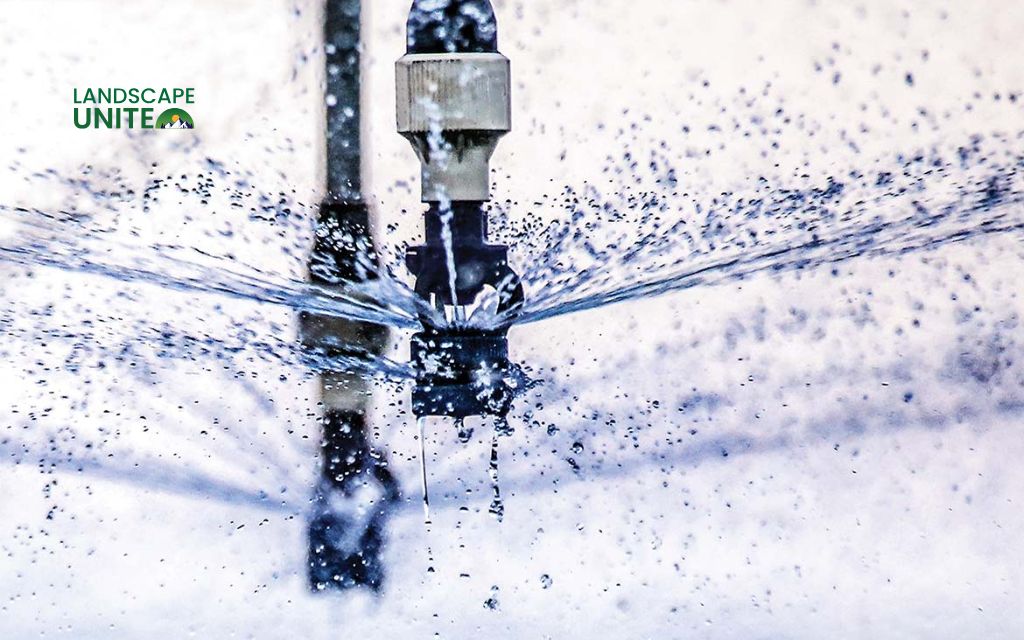
Conclusion
Winterizing your sprinkler system is a simple but essential step to protect your lawn care investment from freezing damage. Whether you choose the manual drain method or use the comprehensive blowout method with compressed air, the key to success is completing the winterization process before temperatures drop below freezing.
Remember that some complex systems or those with specialized components may benefit from professional winterization services.
When in doubt, consulting with a certified irrigation professional can provide peace of mind and ensure your system receives the proper care it needs to survive winter conditions.
Discover additional winter garden equipment maintenance tips in our extensive gardening resource center, featuring expert guidance for maintaining your landscape throughout every season.
Discover more:
How to winterize outdoor faucets and spigots for essential fall home maintenance?
Frequently asked questions (FAQs)
Can I winterize my sprinkler system without an air compressor?
Yes, you can use manual or automatic drain methods if your system has proper drain valves. However, the blowout method with compressed air is most reliable for complete water removal, especially in very cold climates.
How do I know my system is fully drained?
Check that no water flows from sprinkler heads when activated, drain valves stop dripping, and you see only clear air (no water droplets) coming from heads during blowout. Also verify backflow preventers and valve boxes are dry.
Will one freeze ruin my sprinkler lines?
A single hard freeze can cause significant damage if water remains in pipes. Frozen water expands and can crack pipes, fittings, valves, and sprinkler heads, potentially costing hundreds to thousands in repairs.
What’s the best PSI for my system?
Use 50 PSI maximum for PVC pipe systems and 80 PSI maximum for polyethylene (poly) pipes. Always use a pressure regulator and never exceed these limits to prevent damage to pipes and components.
Should I winterize drip irrigation too?
Yes, drip irrigation systems also need winterization. Drain lines, remove and store timers indoors, and blow out emitters if possible. Drip components are often more vulnerable to freeze damage than spray heads.
